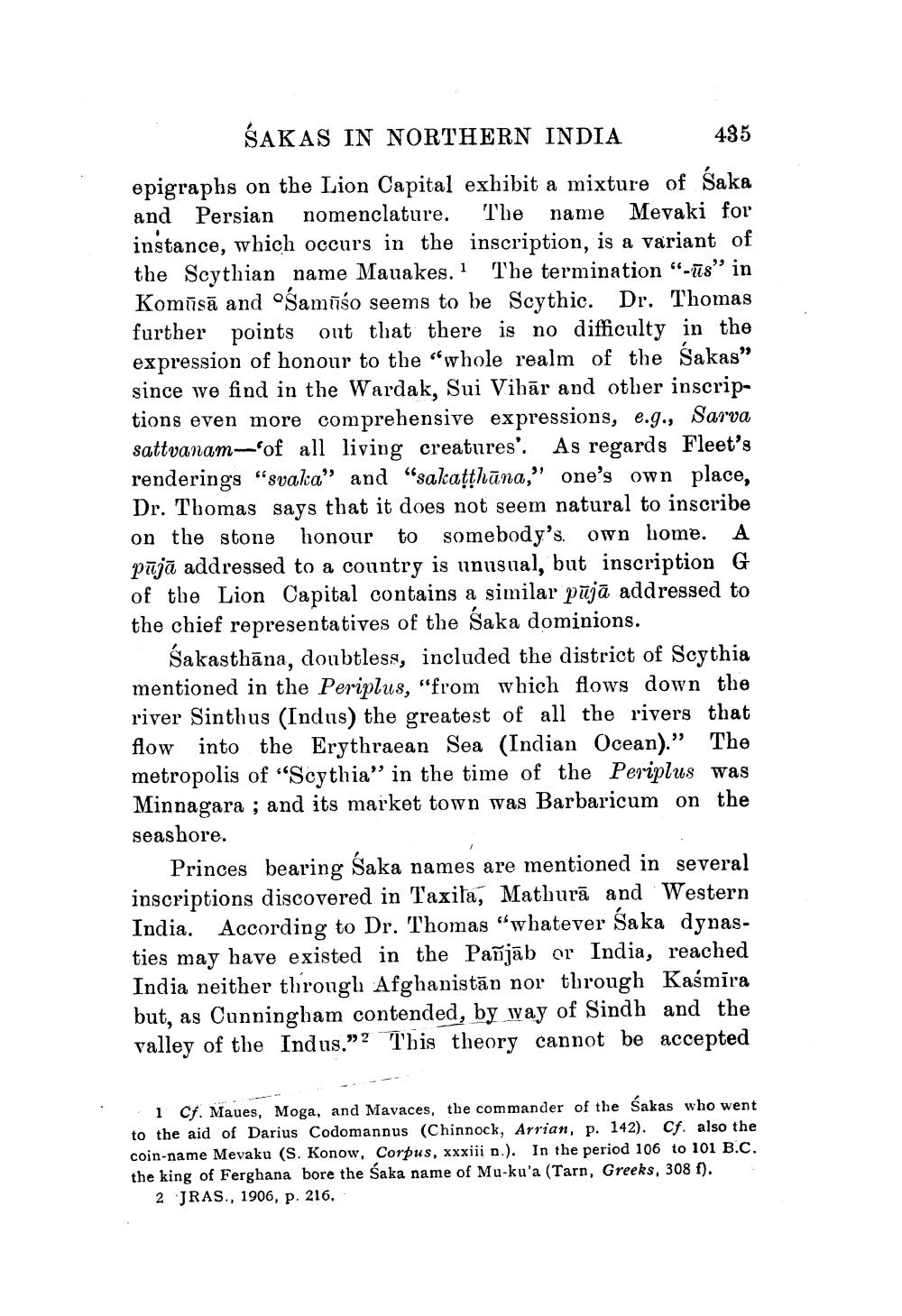________________
ŚAKAS IN NORTHERN INDIA 435 epigraphs on the Lion Capital exhibit a mixture of Saka and Persian nomenclature. The name Mevaki for instance, which occurs in the inscription, is a variant of the Scythian name Mauakes. The termination "-us” in Komūsā and "Śamūšo seems to be Scythic. Dr. Thomas further points out that there is no difficulty in the expression of honour to the "whole realm of the Sakas” since we find in the Wardak, Sui Vihār and other inscriptions even more comprehensive expressions, e.g., Sarva sattvanam--'of all living creatures'. As regards Fleet's renderings "svaka” and “sakatthāna," one's own place, Dr. Thomas says that it does not seem natural to inscribe on the stone honour to somebody's own home. A pājā addressed to a country is unusual, but inscription G of the Lion Capital contains a similar pūjā addressed to the chief representatives of the Saka dominions.
Sakasthāna, doubtless, included the district of Scythia mentioned in the Periplus, "from which flows down the river Sinthus (Indus) the greatest of all the rivers that flow into the Erythraean Sea (Indian Ocean).” The metropolis of “Scythia” in the time of the Periplus was Minnagara ; and its market town was Barbaricum on the seashore.
Princes bearing Saka names are mentioned in several inscriptions discovered in Taxila, Mathurā and Western India. According to Dr. Thomas "whatever Saka dynasties may have existed in the Pañjāb or India, reached India neither through Afghanistān nor through Kasmira but, as Cunningham contended, by way of Sindh and the valley of the Indus."? This theory cannot be accepted
1 Cf. Maues, Moga, and Mavaces, the commander of the Sakas who went to the aid of Darius Codomannus (Chinnock, Arrian, p. 142). Cf. also the coin-name Mevaku (S. Konow, Corpus, xxxiii n.). In the period 106 to 101 B.C. the king of Ferghana bore the Saka name of Mu-ku'a (Tarn, Greeks, 308 f).
2 JRAS., 1906, p. 216.




